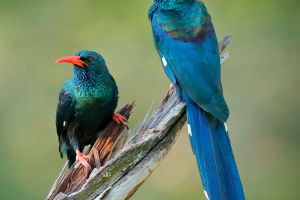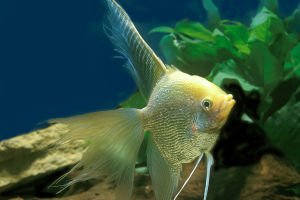The bee-eater family (Meropidae) is renowned for its colorful and captivating members. Merops Apiaster, commonly known as the European bee-eater, stands out as a true marvel of nature.
This elegant bird is found throughout Europe, North Africa, and parts of Asia, delighting bird enthusiasts and nature lovers with its striking appearance and fascinating behavior.
The European bee-eater is a medium-sized bird, measuring around 27 centimeters in length, with a wingspan of approximately 45 to 50 centimeters. Its most distinctive feature is its plumage, which showcases a brilliant combination of vibrant colors. The head and upper body display shades of golden yellow, while the throat and breast boast a stunning blend of turquoise and chestnut. The wings are predominantly brown, complemented by flashes of blue and green, and the long, pointed bill is black.
One of the bee-eater's most captivating traits is its aerial acrobatics. Having exceptional agility and grace, it effortlessly glides through the air, performing impressive twists, turns, and dives. Not only are these aerobatic displays mesmerizing to witness, but they also serve a vital purpose in the bird's relentless pursuit of food. As its name suggests, the European bee-eater has a specialized diet primarily consisting of bees and other flying insects. It employs a unique hunting technique that involves catching prey while in flight.
Perched on a high vantage point, the bird keeps a keen eye on its surroundings, swiftly taking to the air when it spots an insect. With remarkable precision, it swoops down, capturing its target with its sharp bill, and then skillfully returns to its perch. To remove the sting and venom from its catch, the bee-eater repeatedly beats the insect against a hard surface before swallowing it whole.
Breeding season is a particularly exciting time for the European bee-eater. These birds are migratory, spending their winters in Africa and returning to their breeding grounds in Europe during the spring.
Upon arrival, they engage in captivating courtship rituals to attract a mate. Male bee-eaters showcase their vivid colors, fluttering their wings and calling out with a distinctive trilling sound. Once a pair has formed, they work together to excavate burrows in sandy or soft soil banks, where the female will lay her eggs. The female typically lays a clutch of 4 to 7 eggs, which both parents take turns incubating for approximately 20 days. After hatching, the chicks are fed a diet of regurgitated insects by both parents.
As they grow, their plumage gradually develops into the vibrant colors of the adults. Once they have gained enough strength, the young bee-eaters fledge the nest and embark on their remarkable journey. Merops apiaster's captivating beauty, remarkable hunting skills, and nurturing family dynamics make it a cherished species among birdwatchers and wildlife enthusiasts.
However, similar to numerous bird species, the European bee-eater confronts a range of threats, including habitat loss, pesticide use, and the impacts of climate change.
Conservation efforts are crucial to ensure the survival of these enchanting birds and their vital role in maintaining ecological balance. Next time you find yourself in the presence of nature's wonders, keep an eye out for the graceful bee-eater, a true testament to the splendor and diversity of our avian friends.

